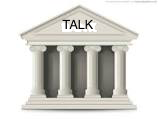
| TalkBank | 
| Tutorial Screencasts |
These screencasts have been created by Dr. Davida Fromm. The links in the "Screencast" column are to videos on our website. These work well if you have a fast connection. For slower connections, or for connections outside of North America, the YouTube links in the second column may load more quickly.
If you are interested in creating versions of these screencasts in your local language, you may find these production instructions useful.
We also have a set of five screencasts designed specifically for SLPs.
You may also wish to look at some of the materials on the second page of screencasts describing these more specialized CLAN functions: SUGAR, CHAT2PHON, CHAT2ELAN, TEXTIN, SALTIN, gesture coding, utilities, and multiple videos.
The media and transcript resources used in these screencasts can all be download from this folder.
| Screencast | YouTube.................. | Contents | Duration |
| Introductions | |||
| Tour of the Websites | Tour of the Websites | what is available at the TalkBank websites | 7:37 |
| Tour of the Manuals | Tour of the Manuals | what is in the four TalkBank manuals | 6:19 |
| Installing CLAN | Installing CLAN | installing and configuring the CLAN program | 4:25 |
| Chinese Example | Chinese Example | an example of transcribing in Chinese | 6:26 |
| Using the Website | |||
| Browsable Watch | Browsable Watch | listening and watching through the browsable database | 5:56 |
| Browsable Search | Browsable Search | searching through the browsable database | 5:55 |
| Morphological Analysis | |||
| MOR-download | MOR-download | downloading the MOR grammar for English | 3:29 |
| MOR-xb | MOR-xb | checking for words not recognized by MOR | 4:34 |
| MOR-chain | MOR-chain | running the MOR, POST, POSTMORTEM, MEGRASP chain | 5:16 |
| Commands | |||
| Commands Window | Commands Window | how to use the Commands Window | 4:48 |
| Example Commands | Example Commands | examples of using KWAL, MLU, COMBO, and GEMFREQ | 4:24 |
| GEM-lazy | GEM-lazy | creating lazy gems | 3:46 |
| GEM | GEM | using the GEM command | 6:00 |
| Linking | |||
| playback | playback | playing media from a linked file | 2:30 |
| F5bullets-1 | F5bullets-1 | using F5 to add time links to an existing transcript | 3:37 |
| F5bullets-2 | F5bullets-2 | restarting F5 and checking times with F4 | 2:46 |
| Sonic CHAT | Sonic CHAT | setting time marks from a waveform display | 7:30 |
| EVAL | |||
| EVAL-1 | EVAL-1 | EVAL basics and using EVAL to analyze files | 8:14 |
| EVAL-2 | EVAL-2 | using EVAL to compare a file to the AphasiaBank database | 5:34 |
| EVAL-3 | EVAL-3 | using EVAL to analyze changes over time in an individual | 4:39 |
| Collaborative Commentary (CC) | |||
| CC-overview | CC-overview | introduction to CC | 7:59 |
| CC-new_user | CC-new_user | registering as a new user for CC | 2:25 |
| CC-join_group | CC-join_group | joining a CC group | 2:23 |
| CC-commments | CC-comments | inserting tags and comments in CC | 5:21 |
| CC-search | CC-search | searching by documents, tags, and users in CC | 2:51 |
| CC-contact_user | CC-contact_user | contacting group users in CC | 2:13 |
| CC-owner | CC-owner | how the group owner can create tag sets | 2:09 |
| CC-manage | CC-manage | how the group owner can manage permissions for users (read, write, etc.) | 1:09 |
| FLUCALC | |||
| FLUCALC-1 | FLUCALC-1 | FLUCALC basics to prepare to analyze files | 4:03 |
| FLUCALC-2 | FLUCALC-2 | examining FLUCALC spreadsheet results | 6:01 |
| KIDEVAL | |||
| KIDEVAL-1 | KIDEVAL-1 | KIDEVAL setup to compare a file to the CHILDES database | 5:30 |
| KIDEVAL-2 | KIDEVAL-2 | examining KIDEVAL spreadsheet results | 8:06 |